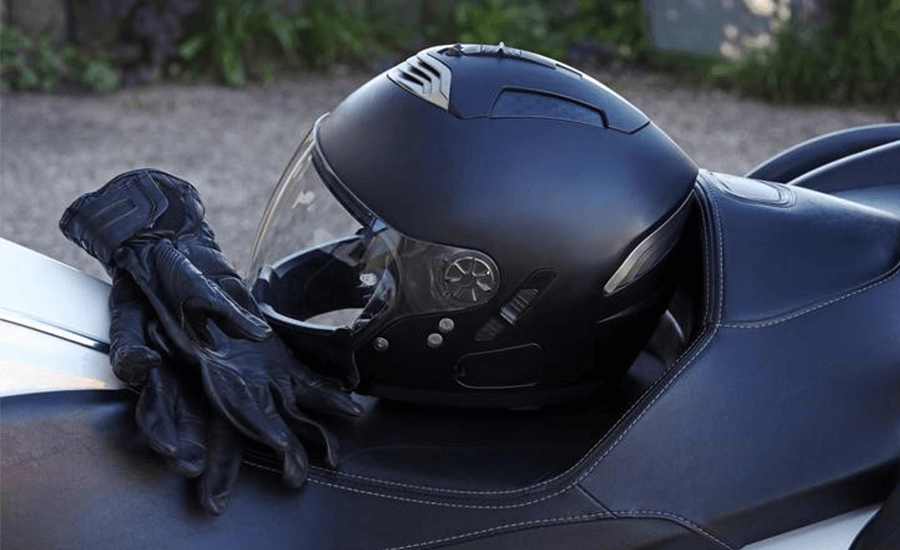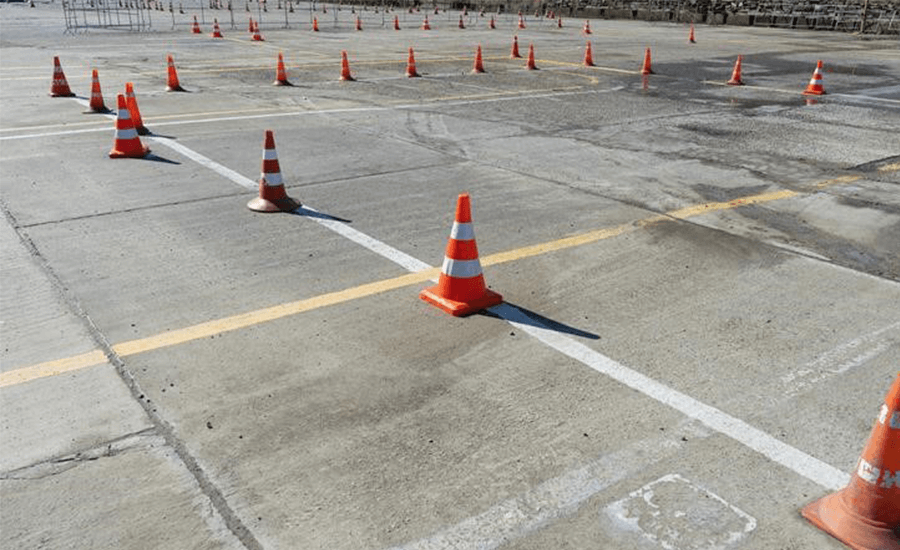Table of Content
1. Introduction
Over the years, the motorcycle laws in Vermont have changed ever so slightly. With those changes, certain regulations have put further restrictions on what motorcyclists can do in Vermont.
Because rules of the road can change over time, it is important for riders to stay updated on the latest batch of Vermont’s motorcycle laws. If you accidentally violate a law because you were unaware of a change, it could lead to unpleasant encounters with the law.
Alongside getting familiar with Vermont’s motorcycle laws, this article will also elaborate on what you need to do to get a motorcycle license that is valid in this state.
2. Vermont Motorcycle Insurance

Because you never know you and your motorcycle are going to get into an accident, you are not a motorcyclist yet until you own Vermont motorcycle insurance. This form of insurance is responsible for paying for repairs, medical bills, etc. related to accidents. Failure to produce Vermont motorcycle insurance will result in fines of no more than $500 and will be treated as a traffic violation. Your Vermont motorcycle insurance must be able to pay for the following:
$25,000 for bodily injury to a person per accident
$50,000 for bodily injuries to multiple people per accident
$10,000 for property damages sustained per accident
Keep in mind that the bullet-point list above only discusses the bare minimum costs that you have to pay for. It is possible to pay for more and better coverage only if you deem it necessary. It is the same principle when it comes to optional forms of Vermont motorcycle insurance:
Uninsured coverage
Underinsured coverage
Collision coverage
Comprehensive coverage
Bodily injury coverage
3. Vermont Motorcycle Helmet Laws

Vermont requires every motorcyclist from all age groups to put on a motorcycle helmet when they are operating a two-wheeled motor vehicle.
The two motorcycle helmets that are considered valid in Vermont are the three-quarter and full-face helmets. They should be authorized by the Commission of the Department of Motor Vehicles and meet the Federal Motor Vehicle Safety Standards.
| Requirements | Three-Quarter Helmet | Full-Face Helmet |
|---|---|---|
| Has the Department of Transportation (DOT) sticker | ✔️ | ✔️ |
| Contours around your head to fit snugly due to comfort padding | ✔️ | ✔️ |
| No signs of damage Ex:// cracks, loose padding, scratches, or frayed straps |
✔️ | ✔️ |
| Has a face shield with no scratches | ❌ | ✔️ |
| Includes separate eye protection with no scratches Ex:// goggles, glasses |
✔️ | ❌ |
| Has a hard and durable outer shell that is shatter-resistant | ✔️ | ✔️ |
| Has an impact-absorbing liner inside the helmet | ✔️ | ✔️ |
| Gives you a clear, peripheral view of your surroundings | ✔️ | ✔️ |
| Securely fastened with neck- or chin-strap | ✔️ | ✔️ |
| Allows airflow without fogging up | ✔️ | ✔️ |
| Can allow you to wear sunglasses underneath | ✔️ | ✔️ |
4. Vermont Motorcycle License Laws

4.1 Vermont Motorcycle Learner Permit
After you have passed your 16th birthday, you are of legal age to receive a Vermont motorcycle learner permit which requires a fee of $20 and is valid for 120 days.
To be given the permit, you must complete the following tasks and fulfill all of the listed criteria:
Complete a 4-hour Vermont Motorcycle Awareness Program Training Course
Or
If you are under the age of 18, a parent or guardian must write his/her signature on the Motorcycle Learner Permit Application
Provide proof of Vermont residency
Provide proof of U.S. citizenship
Provide identification documents
Take a photo
Pass the knowledge exam
Pass the vision exam
Pay the required fees
When you are operating with a Vermont motorcycle learner permit, you will have to comply with the following restrictions as you practice:
You cannot transport passengers
You can only operate during daylight hours
You can only operate in Vermont
4.2 Vermont Motorcycle Endorsement
After you have passed your 16th birthday, you are of legal age to have a Vermont motorcycle endorsement added to your Vermont driver’s license, which requires a fee of $3 per valid year
Listed below are the requirements you will need to fulfill to obtain a Vermont motorcycle endorsement:
| Requirements | Applicants Ages 16 to 17 |
Applicants Ages 18 and Above |
|---|---|---|
| Have a valid Vermont driver’s license | ✔️ | ✔️ |
| Complete a Vermont Motorcycle Awareness Program Training Course | ✔️ | ✔️ |
| Complete a VREP Basic Motorcycle Course or Experienced Rider License Waiver Course | ✔️* | ❌* |
| Held onto a Vermont motorcycle learner permit for minimum required time | ✔️ | ✔️ |
| Provide proof of Vermont motorcycle insurance | ✔️ | ✔️ |
| Provide proof of Vermont vehicle registration | ✔️ | ✔️ |
| Fill out the appropriate driver’s license application | ✔️ | ✔️ |
| Must have the consent of a parent or legal guardian if you are a minor | ✔️ | ❌ |
| Provide your social security number | ✔️ | ✔️ |
| Pay required fees | ✔️ | ✔️ |
| Present valid photo I.D. | ✔️ | ✔️ |
| Take a photo | ✔️ | ✔️ |
| Take vision exam | ✔️ | ✔️ |
| Pass the knowledge test | ✔️* | ✔️* |
| Pass the road skills test | ✔️* | ✔️* |
| Provide proof of U.S. citizenship | ✔️ | ✔️ |
| Provide proof of residency in Vermont | ✔️ | ✔️ |
*Any applicants that complete either a VREP Basic Motorcycle Course or Experienced Rider License Waiver Course have the option of waiving both the knowledge and road skills tests.
4.3 Vermont Motorcycle License Test
Written Portion:
Complete 25 multiple-choice questions
Questions will be based on content from Vermont Motorcycle Manual
Will be tested on an understanding of road rules and safe riding practices
Requires a passing grade of 80% or higher
Road Skills Portion:
Your motorcycle will be subjected to a pre-ride inspection
Demonstrate a basic understanding of motorcycle operation
You will be tested on your ability to stay within the speed limit, adjusting speed and position, maintaining visibility, operating under stress, accelerating, braking, turning, stopping, and swerving
The examiner will grade you based on how well you ride at safe speeds, stay within the lanes, and demonstrate riding maneuvers
5. Vermont Motorcycle Passenger Laws
Passengers allowed to ride can be of any age and are required to own a motorcycle helmet that is of similar quality as the operator.
The lack of a seat belt and a canopy means your passenger is more likely to get thrown off if you brake suddenly or get into a collision. To lower the chances of your passenger being put at risk, the passenger seat can be placed in one of the following ways:
At the back of a large driver’s seat
Towards the rear as a separate saddle
Fixed to the side as a sidecar
Since the height and age of your passenger can vary, your motorcycle would also need footrests to help keep your passenger in a comfortable position. Because motorcycle seats cannot always accommodate every age group, it is recommended riders only take on passengers who meet the following standards:
Your passenger must be able to reach the footrests
Your passenger must wear an approved motorcycle helmet
Your passenger cannot be carrying any packages
Your passenger must be able to understand and follow your directions
6. Vermont Lane Splitting Laws

If you try to lane split in Vermont, you are susceptible to being pulled over and fined by the police. Lane splitting is an umbrella term referring to examples of driving outside of the designated lanes. The main examples of lane splitting, and the ones to avoid, include the following:
Riding on top of the dividing lines between lanes
Riding in between adjacent rows of stopped vehicles
Overtaking a larger vehicle ahead in the same lane
Unlike cars which take up the entire space of a lane from right to left, a motorcycle has a bit more room to maneuver. So long as they stay within the lanes, motorcycles are capable of feats that four-wheeled motor vehicles cannot. Listed below are examples of lane sharing:
You are allowed to make full use of the space within a single lane
-
You can only share a lane with another motorcycle so long as:
You ride alongside no closer than 10 feet
You ride behind no closer than 10 feet
7. Vermont Motorcycle Equipment Requirements

If you have not brought your two-wheeler into a state-approved inspection station at least once this year, it is best you make an appointment as soon as possible. Failing to maintain upkeep on your motorcycle could lead to malfunctions and getting in trouble with the law. Excluding parts solely intended for aesthetic purposes, the following components are needed for your motorcycle to be suitable for the streets:
Horn
Wheels
Tires
Fenders
Handlebars
Front & Rear Brakes
Controls
Headlight
Tail Light
Brake Light
Turn Signals
Exhaust System
Muffler
Rearview Mirrors
8. Sources
- Vermont Motorcycle Manual
- Vermont Statutes Online - Maintenance of Financial Responsibility
- Vermont Statutes Online - Motorcycles; Headgear
- Vermont Department of Motor Vehicles - Motorcycles
- Vermont Department of Motor Vehicles - Motorcycle Learner Permit
- Vermont Department of Motor Vehicles - Motorcycle Endorsement
- Vermont Department of Motor Vehicles - License Fees
- Vermont Statutes Online - Riding on Motorcycles and Motor-Driven Cycles
- Vermont Statutes Online - Operating Motorcycles and Motor-Driven Cycles on Roadways Laned for Traffic













Leave a comment
All comments are moderated before being published.
This site is protected by hCaptcha and the hCaptcha Privacy Policy and Terms of Service apply.